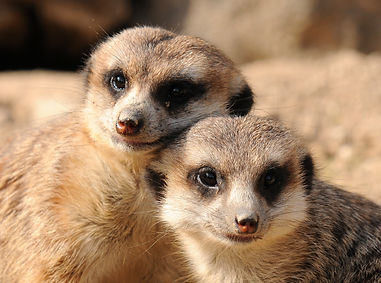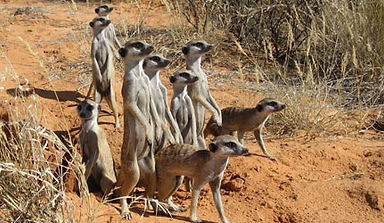
Suricata suricatta
by Shanilka Leitan
REPRODUCTION

Fertilisation Strategy
Mating in bands of meerkats is usually left up to the alpha male and the alpha female of the group. When they reach sexual maturity around the age of 10 months they mate, the male will groom the female until she submits to him, then copulation begins. Meerkat fertilisation happens internally, this is called cross-fertilisation; when the male’s and female’s gametes fuse together during fertilisation. Meerkats are seasonal breeders; they generally mate around the beginning of summer. Gestation normally lasts for around 70 days; the mother gives birth towards the beginning of November.
Advantages:
-
Allows a greater variation of genes due to the joining of two different individuals.
-
Less population growth because of the need to find a mate before mating
-
The offspring can be influenced by selective breeding
Disadvantages:
-
The process is slower
-
It requires long term energy use because the mother has to carry the pups in her womb until they are born
-
For some species mates are difficult to find
-
Less reliable, the sperm and the ova have to fuse and properly form an embryo
Reproductive Behaviours
Mating in the gang is reserved for the alpha male and female, however things may happen to change this for example, the alpha male may die or be overthrown by another male. The alpha female may also mate with a wondering male from another gang, what they won’t do is mate with a direct family member. When the alpha female becomes ready to mate she will chase away all other beta females that are capable of bearing young. These betas will become temporary outcasts until the dominant female has given birth to her pups and regains her strength. The alpha female does this because during the gestation period she is weak and other beta females may try and displace her during her time of weakness.
Advantage:
-
The offspring would turn out healthy and strong, as its usually the most strong male and female are the ones that mate.
Disadvantage:
-
The process of attracting a mate can also pose a danger because attracting a mate can also attract potential predators.
